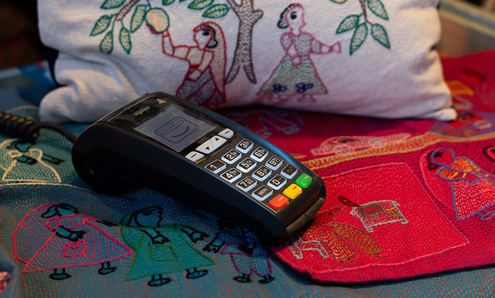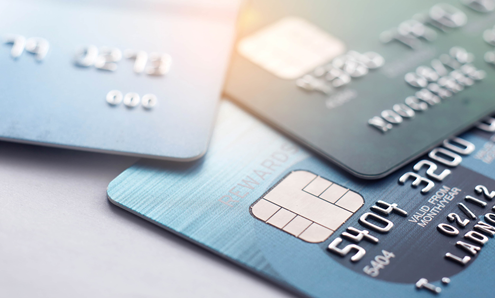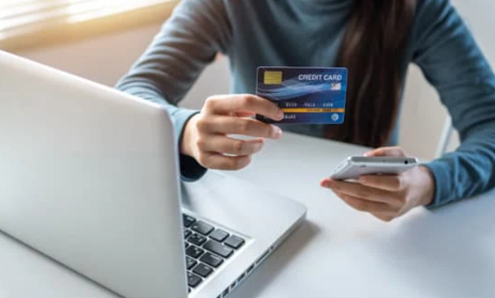Cash has been the backbone of local businesses for decades, but in today’s society, that’s changing. Consumers are making the move to card payments at a rapid rate: UK Finance’s Payment Markets Report for 2021 found that debit and credit card transactions made up the majority of all payments in the UK, rising to 57%, while cash payments fell by 1.7%.
As digital payments are our speciality, let’s dive deeper into the current state of card transactions and what it might mean for the future of cash…
What do card payments look like today?
Here at takepayments, we’ve collected data from card machines and point of sale (POS) systems from March 2021-February 2022 and February 2022-March 2023. Focusing on chip and PIN and contactless transactions, we’re sharing some key insights that reveal how consumers are using their cards to pay.
Our key finding was that, overall, contactless transactions have increased by 25%, while chip and PIN has fallen by 12%
Here’s a closer look at the change in card payment habits by region:
| Region | Contactless transactions % change | Chip and PIN transactions % change |
| North East | +32% | -15% |
| East Midlands | +28% | -15% |
| Yorkshire | +24% | -17% |
| South East | +24% | -10% |
| West Midlands | +23% | -12% |
| North West | +21% | -21% |
| South West | +21% | -11% |
| East of England | +20% | -17% |
| London | +18% | -2% |
Highlights by region
- The North East saw the most significant change in card payment methods, with the number of contactless payments rising by 32%
- On the opposite side of the country, the North West had the biggest reduction in chip and PIN payments. Against the previous year, chip and PIN transactions fell by 21%
Highlights by industry
- In terms of industries, colleges and universities saw an increase in both chip and PIN and contactless transactions, but contactless grew exponentially by 569%.
- The amount of contactless payments more than doubled in department stores (121%), while chip and PIN transactions fell by 8%
- Beauty and hair salons also saw a 65% increase in contactless and 14% decrease in a chip and PIN transactions
- Contactless transactions grew by 41% in nightclubs and bars; chip and PIN payments fell by 4%
- Restaurants were the most popular location to make contactless payments, accounting for almost a quarter (22%) of all contactless payments
After reviewing our card payment data, contactless transactions outgrew chip and PIN in every region in the UK, with the most significant changes in card usage habits taking place in the north of England.
And with the amount of contactless transactions growing, it’s possible that shoppers are swapping their cash for plastic – or leaving their cards at home completely in favour of contactless mobile phone payments, which are expected to reach over 1 billion users by 2023 and represent a growth of 60%.
Another interesting point is around the rise in card payments at colleges and universities. These are frequented mostly by students, who represent the Gen Z demographic. Insights from Clearpay reveal that the two youngest demographic cohorts, Millennials and Gen Z, are expected to account for 39% of the UK’s total retail spend by 2030.
So, it’s worth noting the growth in both card payment methods in this industry is likely due to the fast-growing and powerful portion of the economic market. Often considered ‘digital natives’ and the most tech-savvy generation, their exponential increase in contactless transactions may have been exacerbated by the covid-19 pandemic.
While making the switch to card seems like a natural next step, there are concerns that some citizens could be left behind – particularly those who are less comfortable changing from physical currency to digital payments.
Whether you’re for or against the idea, it’s always useful to clue yourself up on the facts. So, to bring you up to speed, we’ve pulled together some top reasons to consider going cashless.
6 benefits of going cashless for businesses
1. It’s faster
First and foremost, payment on card is three times faster than traditional cash transactions. According to a report from Timetric, cash payments take between six and seven seconds to process compared to just one or two seconds for contactless payments.
Paying by card might be faster, but what exactly does that mean for customers? Well, a survey from ACI Speedpay found that 35% of consumers would consider changing their payment method to have payments process faster.
For businesses that often find themselves with hefty queues, particularly during peak times like commuting hours, opting to go cashless will speed up the check-out process significantly and help to get through more sales in a day to boost profits. It can cut down on queueing time and increase the chance of consumers who’re in a hurry popping in to make a purchase.
By going cashless, your business could also save a fair amount of time on handling and counting up cash at the end of the day and going to the bank to make deposits. That time could be put towards other activities aimed at benefiting your business. This might include serving customers more efficiently, reducing waiting times, and enhancing overall service quality.
2. It’s more convenient
A study by Linnworks has shown that customer convenience is one of the top deciding factors in purchasing decisions.
Thanks to contactless and mobile payments, spending money is now more convenient than ever for consumers. Opting to go cashless eliminates the need for shoppers to find an ATM and withdraw cash or head to their bank’s nearest branch and wait in line. It also means that they don’t have to worry about carrying enough change to make a small purchase - all of which can be enough to put them off completely.
As cashless transactions encompass a wide range of different payment methods, having a selection of ways to pay promotes accessibility and inclusivity, enabling companies to reach a broader customer base.
By offering options like mobile payment apps or digital wallets, businesses can cater to individuals who may not have traditional banking services, expanding their market reach and fostering customer loyalty.
3. It’s safer
Cashless transactions are safer in three ways:
- They reduce the risk of robbery — The 2019 Access to Cash Review suggests how criminals are more likely to target businesses for cash as it’s more difficult to trace: “There is clear evidence that cash plays a large role in facilitating crime because it’s untraceable.”
- They eliminate staff theft —Research shows employee theft costs UK businesses £140,000 a year. While it’s hopefully something you’ll never have to experience, cashless transactions eliminate the worry.
- Less susceptible to fraud — The security behind card payments is constantly being updated and tightened. With cash payments, there’s always a risk of counterfeit money. In 2022, for example, 199,000 fake notes worth the equivalent of £4.4 million were taken out of circulation.
4. It can encourage more spending
A commonly cited study by Dun & Bradstreet proved that when consumers use their card for purchases, they spend up to 18% more than when using cash. Why? Because having a finite amount of cash in your wallet will put an upper limit on your purchasing compared to the flexibility on offer with a card.
Experts in the field have coined this ‘friction-free spending’, but some studies have even discovered that consumers are conditioned to want to spend more at just the sight of a credit card logo.
5. It improves accounting
Picture the scene: you’ve been working hard at work for 10-12 hours and it’s time to close up shop, but not until you’ve gone through the till — which you then discover is short. What do you do next? You have to work out what’s gone wrong.
Imagine not needing to sift back through the books, receipts, and paperwork to discover why this is, but instead having a simple log of every transaction. Using an ePOS system to process digital transactions generates automated electronic records that can be seamlessly integrated into accounting software or sent straight to your accountant.
Going cashless not only makes accounting a doddle, but it can also be much more accurate than handling cash since you cut out the occurrence of human error when handing out change.
By minimising the need for dealing with cash and register management, cashless payment methods contribute to overall increased operational efficiency.
6. It’s rewarding
Businesses that offer cashless payments may attract more customers who earn rewards points or cashback offers by using their credit cards.
Many large credit card companies offer points schemes or cash rebates each time they enter or tap their card for a transaction – for example, American Express offers up to 5% cashback for the first three months. This has obvious perks for the customer, but these schemes can also help businesses become more profitable. Customers may be encouraged to spend if it’s incentivised and they get something out of it, which in turn helps businesses to increase their sales.
Ready to start accepting more card payments? Whether you’re convinced going cashless is the future or you just want to offer your customers more convenience, when it comes to taking card payments, you’re in the right place.
Here at takepayments, we offer card machines to suit businesses of every shape and size, including portable, mobile, countertop, and our all singing all dancing EPOS till system. Get in touch with our experts at 08082 393294 and see what we can do for you.






